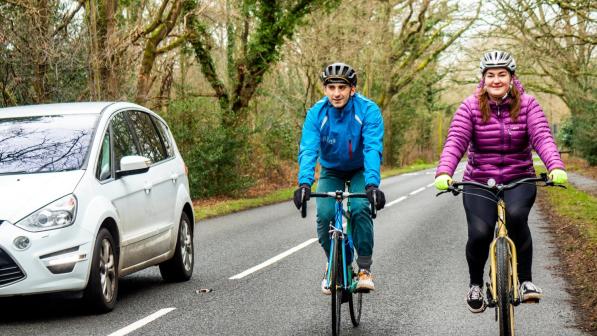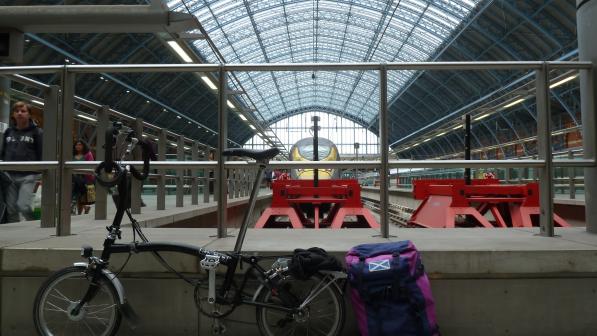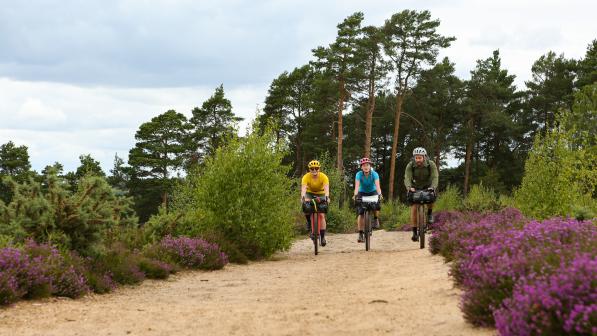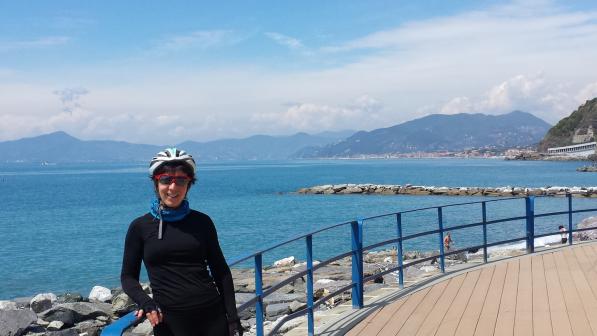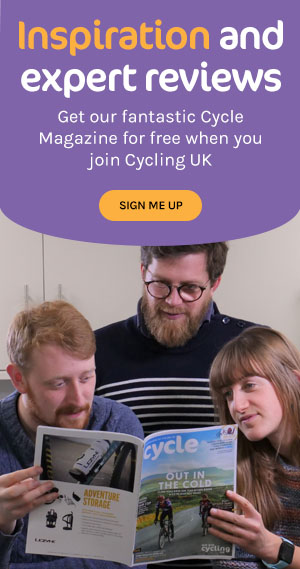Great Rides: Sardinian journey

Tune into a news report of flooding anywhere the world and you’ll often see shots of stranded vehicles, then a cyclist pedalling slowly by in the background. If such a report had been filmed in the industrial zone of Cagliari, Sardinia, in September 2020, that cyclist would have been me.
I passed a line of milling cars, windscreen wipers at full tilt. The water’s edge inched closer. It looked ridable – and was. Chuckling, I ploughed a temporary furrow through the shin-deep murk, past the flotsam and jetsam of beer cans and fast-food cartons, trying not to think about what unpleasantness my feet were dipping in and out of. After 200 metres, I emerged onto traffic-free tarmac, no wetter or worse off than I had been before.

Rider of the storm
I’d only left Cagliari half an hour ago. Five hours before that I’d closed the front door to our Surrey home. Both places had been sunny. Yet as I rumbled along the rough track leading through the giunco (the tall reeds of the island) from the airport, the skies cracked with the precursor of lightning. Small rain spots turned to fat dollops, then became a deluge that stopped cars as drivers struggled to see through their windscreens.
I stopped to strap my rear light on to the left seatstay, then carried on. I’d been soaked in the first 30 seconds of the warm rain and was so wet that it had ceased to matter. I was savouring the wonder and freedom of being on my bike on foreign soil. My phone buzzed from a sodden pocket. It was Daria, my Italian partner. She’d stopped in a lay-by with her parents, who had met us at the airport.
“Are you sure you wouldn’t like a lift? My parents think you’re crazy riding in this weather…”
Even if there had been room for me and the bike, my answer would have been the same: “No, grazie.” I knew her parents would be discussing the pazzo inglese – the crazy Englishman – who was happier cycling through a tropical-style thunderstorm than sitting in a nice dry car. How could I explain that after months of lockdown, largely confined to a twoup, two-down in rural Surrey, this unplanned ride would not stop for a little rain? Okay, a lot of rain. It was like riding in a warm bath, with cars rather than rubber ducks for company.
“I’ll be fine, ci vediamo a Carloforte!”

The 'road' less travelled
I’ve visited Carloforte – or, more accurately, Isola di San Pietro – for the past ten summers. It feels like my Italian home. A tiny volcanic island tucked away on the south-west coast of Sardinia, it was first settled by the Phoenicians, and later the Romans. In the 18th century, after long years of being uninhabited, a colony of Genovese who had been driven from a small island off of Tunisia made it their home. It’s why, unlike the rest of Sardinia, the dialect of the residents is different – an off-shoot of Genovese.
Daria spent her childhood there during the hotter Italian months, so it made a fitting place to reunite with her family after half a year of separation. The benefits of remote working and untaken holiday meant that we could make a proper stay on this fortunately Covid-free island. Which is how I found myself pedalling through a flooded industrial zone. This was the first time I’d brought my bike with me.
The rain stopped as the tarmac ended and the best part of my route began. To reach Carloforte from Cagliari, there are two conventional ways: a direct route inland to the ferry port at Portoscuso; or a circuitous route hugging the coast, which leads you to the ferry at Calasetta. I was taking the third way: an old, ramshackle provincial road that heads high into the hills of the regional park of Is Pauceris, cutting a line between the other two routes.
It’s a gradual 435m climb over 20km. The state of the unsurfaced road, not the gradient, forces you to zigzag to the top. I’d spotted it scouting on Google Earth. As I gradually climbed above the treeline, I knew I’d chosen wisely. Not a single car passed. The air was rich with the Mediterranean scents of the freshly drenched undergrowth. For the first time in months I felt happy in my isolation.
The sun did its best to burn through the clouds but all it achieved was treeline mist. Celebrating the high point with a brief picnic, I revelled in the scenic solitude. The three-hour struggle uphill was undone in a 45-minute descent. I bounced down at speed, hopping potholes and using the whole width of that gravel track to its best advantage.
Motor traffic returned with the tarmac. So I abandoned my previously plotted route in favour of more rough-stuff: a network of farm tracks near Piscinas. The temptation to stop at villages I passed through was high, but with the world trying to emerge from the pandemic I was not ready to engage. I pressed on, choosing likely-looking lanes. This led to a field whose topsoil had washed off and created a thick unridable sludge. Socks, shoes, bike – everything took a pasting.

Racing for the ferry
Suitably chastened, I returned to the road as the evening crept in. The clock was ticking. While the Mediterranean has no tide, their ferries wait for no man. Bible black, the night came down as I raced through Sant’Antioco’s cobbled streets. Silent restaurants, usually teeming with Italians, blindly watched my passage. Tired, mosquito-nipped legs began to cramp as I sped through the island interior. Minutes dripped like sweat as I strained to reach the 10pm ferry… which slipped from the jetty seconds after I reached the harbour.
The wait was not so bad: two hours, two beers, and two pizzette later I was the sole cyclist to roll off the gangway onto Carloforte. The final climbs to the San Pietro’s heights passed easily in the dark. Bed beckoned and with it the morning and further opportunities to explore. But for now, I was home.
More info
Rail travel to Italy is straightforward with a compact folding bike. Read about Clive Parker’s trip by Interrail and Brompton.
Do it yourself: Getting there
The easiest way to Cagliari is flying. The pandemic has impacted the flight paths of multiple airlines, but EasyJet, Ryanair and British Airways used to fly direct from London. There were direct flights from Birmingham, Bristol and Manchester too. At the time of writing (February 2022), a return flight with BA including luggage costs from £109.
Until Eurostar starts taking bikes again (which should be this summer), sustainable travel is difficult. If you can get to Paris, take a fast train to Toulon (TGV ~4hr), and then a ferry to Porto Torres in the north of Sardinia (~13hrs, twice a week). There’s a morning train to Cagliari (~4hrs, change at Sassari). Or why not ride there?
